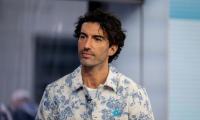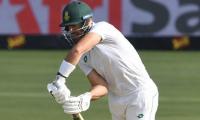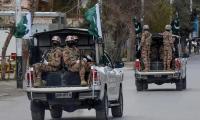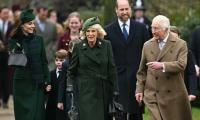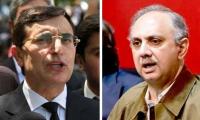Today’s Pakistan should have been a far better place than it was in 2008 and 2013. But, despite some very marginal improvements, we are far from moving towards inclusive and sustainable economic growth and social empowerment of our people after the completion of four years of the Nawaz Sharif government. Even though people are protesting against loadshedding, Finance Minister Ishaq Dar is confident about taking Pakistan from its current 43rd ranking in terms of GDP to 20th global ranking by 2030. One wonders how that will come about.
According to the IMF, we will still be 42nd in GDP ranking by 2022 and will hardly be a peripheral middle-income country by 2030. We recite the mantra of an exogenous ‘game-changer’ – previously aid from the US and now CPEC which may provide an impetus but will not change our destiny as a dependent and under-developed economy surviving on borrowed money with ever extending theatres of all-around wars.
Contrary to the brave announcement of the finance minister that we will not have to go back to the IMF, Pakistan will have no option but to beg again for an IMF bailout package to balance a precarious current account deficit, keep our fragile sovereign guarantees floating above the stormy waters and meet the spiralling costs of our debt repayments. Except for rent-seeking and fighting for greater share and largesse in the ever-diminishing economic returns, the ruling elites have no remedy to offer to salvage the plight of the people and take the country away from the road to nowhere. They – whether from the landed aristocracy, big business or the civil-judicial-military bureaucracy – are mostly parasitic and flourish by exploiting our working people and plundering meagre national resources. They have nothing to offer except false ideologies – from populism, neo-economic liberalism and nationalism to a variety of Islamism or sectarianism.
When trade deficit continues to grow and becomes almost double than our exports and overseas workers’ remittances and when a major source of foreign exchange earnings are stagnating and debt-servicing and higher defence spending are going to consume our reserves and revenues, how will Pakistan become economically, fiscally and financially viable? Sadly, I have not seen any political party or an economist come up with some mid- and long-term alternative strategies and radical solutions. All that is being compared with the fudged-up statistics, in the absence of autonomous monitors and regulators, is the fiscal management and economic governance of this or previous administrations.
Successive governments had sought the same tested and failed remedy from various IMF structural adjustment programmes, but fundamental structural, institutional and fiscal distortions and impediments have continued unabated. Dar is credited with completing the last Extended Facility. But except for bringing fiscal deficit down, he has missed all the other set targets. Thanks to a better agricultural performance, he is able to boast a 5.3 percent GDP growth rate in only the fourth year of his econometrics. Another failure in agro growth, like the previous year’s, can push us back to 3.4 percent growth rate – almost close to our population growth rate.
The Economic Survey of Pakistan 2016-17 provides all kinds of excuses to explain the targets missed in the outgoing fiscal year, and the finance minister presents a rosy picture while missing most of the targets he has been ambitiously setting for his team (beyond their capacity). The higher targets set for his struggling subordinates, who resort to fudging, have repeatedly backfired and cost him his credibility as a professional financial manager. Of course, you cannot be very forthcoming about missed opportunities in an election-year budget, and are constrained to resort to supply side economics and a high Public Sector Development Programme (PSDP) to alleviate the frustration of a hapless electorate. The Sharif government was lucky that when it came to power, commodity, oil prices and inflation drastically went down and created a comfortable fiscal space. It was also helped by a generous IMF package and the launch of CPEC and ‘early harvest’ energy and infrastructure projects. Coincidentally, China’s grand One Belt-One Road project also fits well with Sharif’s brick-and-mortar model of development.
Since all the three mainstream parties follow neoliberal economics with some minor variations to address their respective constituencies, the budget proposals have not attracted their serious attention. The media too did not let its focus divert from the untraceable enigmas of two money-trails being investigated by the Supreme Court, besides the self-serving and extremely biased public trials by the adversaries. Given their elitist character, the mainstream political parties want to keep the attention of the masses away from real issues. With one of the lowest ratios of savings, investments, revenues and equally worse social and human indicators in the world, we are adamant to restructure our economy and its various sectors, the state and its sprawling institutions and redesign our isolating foreign policy and self-imploding security policies.
We as a nation-state (even this is not decided) continue to survive on borrowed time and resources while posing as the fifth military and nuclear power while 60 percent of our people live below the poverty line, 40 percent of our children are stunted and half the population remains illiterate.
Certain decisions need to be made if Pakistan is to become a civilised and prosperous country. It’s not the bloody economy but the bloodier political economy that is holding us back – a feudal-monopolist-security power structure that requires a complete overhaul in favour of the tolling masses, small and medium sized farmers and manufacturers. In an inclusive and sustainable process of capital accumulation, a national security state must give way to a social-welfare republic.
The focus should be on the promotion of agro-based, high value-addition manufacturing, knowledge-economy, cooperatives of farmers and SMEs, human resource and physical infrastructure. Primary emphasis should be the people and fulfilment of their basic human needs such as population planning, employment, equitable wages, compulsory and quality education for all, skill development, health services, clean drinking water, sanitation, decent housing and a safe environment. Transparency, accountability and all-sided reforms are a must to ensure good and efficient governance, besides radical devolution of power to the grassroots level.
This will require a reversal of the taxation policy from indirect to direct taxes on income without exception to any rich segment. And the resources should be primarily allocated to fulfil the needs of the people rather than on the extravagance of civil and military elites. While the structure of our imports must be confined to essential inputs and goods, a narrow exposed base of exports need to be expanded to areas where we have relative advantage. We need to revisit our Pak-China FTA to mitigate our bilateral trade deficit of $9.7 billion, more than our total current account deficit. CPEC must also be tuned to enhance indigenous productivity, connectivity and knowhow. And it must bring South and Central Asia and Iran together.
Our national priorities will have to be drastically changed. If we are to join the group of 20 developed nations, the rates of savings, investments and revenues will have to be more than doubled. This will require a peaceful neighbourhood and regional cooperation. We should forget pursuing military symmetry and competing with India, which is competing with China and is going to become the fourth largest economy of the world by 2022. Peace both within and with our neighbours should turn a warrior state into a friendship bridge between South, West and Central Asia in partnership with China and India. But who will do all this?
The writer is a senior journalist. Email: imtiaz.safma@gmail.com
Twitter: @ImtiazAlamSAFMA
MPAs ask for their salaries and benefits to be at par with high court judges and exempt from tax
This system fosters and places premium on VIPs, facilitating VIP culture, which is alive and kicking
Imagine this waste covering over 15,500 cricket stadiums, piled three meters deep every year
If there is one thing that can be gleaned from politics today, it is that we no longer speak same language
Postman argues that “typographic mind” was yielding to “televisual mind”
Pakistan is well poised to meet opportunities that Artificial Intelligence will offer for developments in industries
